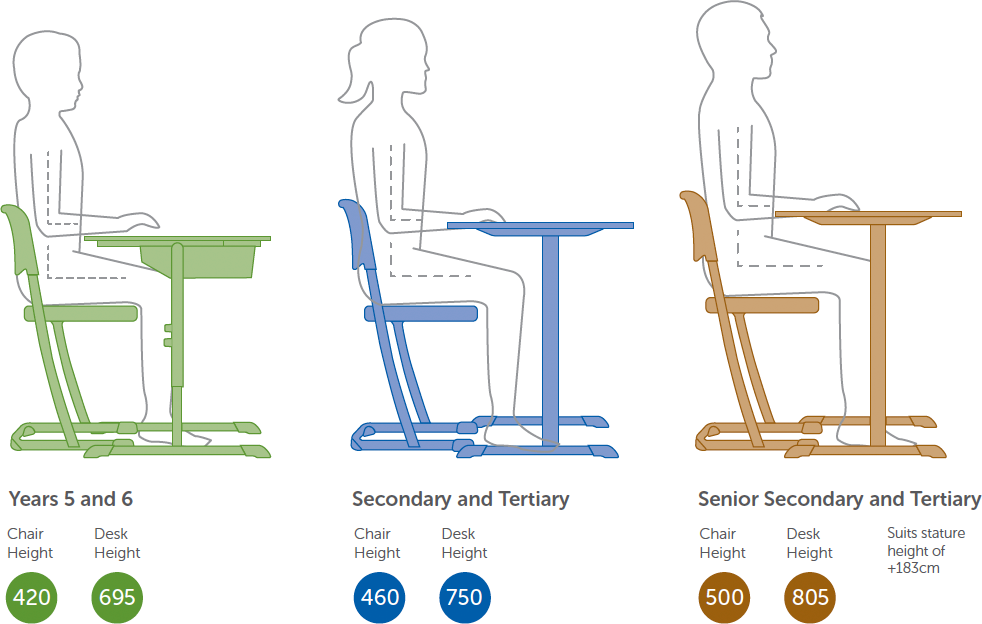Optimal Height Guide
The colour coding system of violet, yellow, red, green, blue and brown provides easy recognition of the appropriate furniture sizes. Through this system all students can be properly seated for optimal ergonomic/work performance.
Optimal chair and desk heights
Woods observes the ISO 5970 and EN 1729 Standards. In these Standards the stature height, approximate school year level and seat/desk heights have been correlated and the six chair and desk heights have been determined.
The decisive factor is regular checking of the size of the individual, as the heights of students in one classroom vary considerably due to their individual development.
Appropriately sized furniture is essential for optimal concentration levels, growth and skeletal development in adolescent bodies.
When a desk is too low, the child is forced to work with a bent back which strains the spine and supporting muscles. On the other hand a desk that is too high causes the shoulders to be raised and creates muscle tightness and pain.
The height of the desk top is best determined after the correct seat height is chosen. The appropriate chair height ideally occurs when the front edge of the seat is at the same level as the point of flexion at the back of the knee. Ergonomists refer to this as the popliteal height.
When sitting at the desk, the arms should be bent at 90 degrees. The desk top is correct when the tips of the elbows are one or two centimetres below the horizontal desk top.
There is no more important furniture than the ones we ask our children to sit at.



